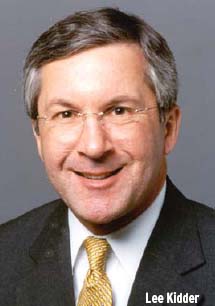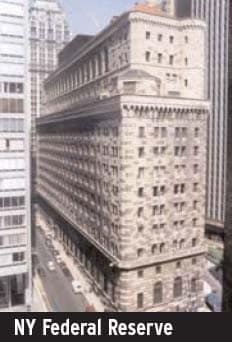The Americas

Anyone who has called a US banks call center recently has heard the ever-popular command of Press 1 for English, Press 2 for Spanish. It seems banks have finally discovered the US Hispanic market.
The 40 million Hispanics in the United States make up the countrys largestand fastestgrowing minority, and their numbers are expected to triple by 2050. Hispanics purchasing power is already $600 billion and is predicted to hit $1 trillion over the next decade.
Yet studies suggest that less than 30% maintain banking relationships. By some accounts, 70% of the growth in new US financial services over the next five years will come from Hispanics. So far, banks are boosting bilingual staffs, introducing bilingual ATMs and launching Spanishlanguage websites and ad campaigns.
Remittances are the first step in getting Hispanics in the door.The Inter- American Development Bank predicts they will have sent some $30 billion back to their countries of origin this year. By providing lower fees and faster service, banks not only take market share away from Western Union and MoneyGram but also create a crossselling opportunity.
Bank of America is a case in point. It offers Hispanic clients its SafeSend debit cards that allow them to deposit funds in the US for withdrawal by relatives in Mexico. If they sign up for SafeSend, they also get monthly savings and checking fees waived on their Nuevo Futuro combined accounts.
Spains BBVA wants a piece of the tortilla. After acquiring Californias Valley Bank last year, it has acquired Texass Laredo National Bancshares financial group, giving it an entry into the two states with the highest concentration of Hispanics. Puerto Ricos Banco Popular, already the largest Hispanic-owned US bank, is also bracing for competition from several Hispanic-owned startups.
As they continue to seek growth opportunities, it appears US and foreign banks alike will soon be rolling in dinero.
Santiago Fittipaldi
|
|
 The Basel Committee on Banking Supervision wrapped up the latest version of its Accord on Banking Supervision almost half a year ago, but banks, particularly in the US, are still in a quandary over what to do about it. On the one hand they are under pressure to advance their lead-time preparations, yet without explicit guidance from regulators as to how they will assess banks against Basel II criteria, there is a reluctance to commit to large technology investments. This is particularly problematic for US banks, says Lee Kidder, director of wholesale banking research practice at consultant TowerGroup, because they are more reluctant to commit to preparations without clear-cut guidelines. Basel II was finalized in June, but US and other banking regulators will not issue specific interpretations until the middle of next year, with publication of final rules by regulators not expected until the second quarter of 2006. All internationally active banks must have implemented Basel II requirements by January 2008. That is clearly still some way off, but Kidder says banks need to start making preparations now if they are to capture the several years of historical loss data required. They must also demonstrate that risk measurements are integrated into everyday business processes. Outlining the dilemma banks face, Kidder asks: Should they wait a year for more specific regulatory guidance and risk falling behind their competitors? Or should they proceed based on the framework alone and risk misinterpreting some requirements? According to Kidder, the risks are high: Banks that approach Basel II either as another compliance obligation or as merely a fast track to lower capital reserve requirements will misinterpret the strategic value of Basel II and very likely waste much of their technology investment, he says. Even relying on advice from consultants might be risky, however, if Kidders words of caution are anything to go by. Apparently, optimal benefit will be gained only if banks can demonstrate throughout their organization the strategic value of correlating the information needs of corporate compliance with those of the separate business lines. Er, come again? Anita Hawser |
EUROPE
EUROPEAN PENSION FUNDS FAIL TO BITE THE BULLET

Europes institutional investors should not be lulled into a false sense of security by the sizeable donations corporate pension plan sponsors made last year, says consultancy Greenwich Associates. Greenwich Associates Chris McNickle commends European plan sponsors for acting responsibly following the crises of 2000 to 2002 but says conservative asset allocation means more than a third of continental European pension funds dont hold enough assets to fully fund estimated future benefit obligations.Aging workforces in these countries will also continue to increase liabilities.The findings form part of Greenwich Associates 2004 research on continental European investment management, which analyzes trends in institutional funding ratios, asset mixes and investment strategies and contrasts it with data for the UK market.
According to McNickle, as plan sponsors on the continent are more dedicated to their final salary plans than other markets, European institutional investors need to keep on their toes, increasing investment returns in order to meet future obligations. Some investment managers have taken radical steps in terms of readjusting their asset allocations, but Greenwichs research indicates that many failed to follow through on previous promises, specifically in terms of increasing allocations to equities and alternative investments. For three years in a row, plan sponsors and other institutional executives on the continent have been saying that they were going to make much more use of this high-alpha class of assets, but when it came time to put the chips down, many lost their nerve, says McNickle.
According to Greenwich, European government bond allocations declined to 25% of overall institutional assets at the end of 2003, compared with 27% the previous year.However, European allocations to private equity only amounted to 1% of total assets in 2003, and overall allocations to hedge funds remained flat at approximately 1%. Last year, institutions reported that they intended to increase equity allocations.Yet, McNickle says, this didnt happen for the most part as many sold off equities to balance prior losses. Despite a 30% increase in the performance of the worlds stock markets last year, McNickle says the overall proportion of equities in a typical continental institutions portfolio increased only slightly, from 20% at the end of 2002 to 22% at the beginning of this year.
AH
|
|
 The increasingly competitive hedge fund industry is feeling the heat from US regulators again, but this time the criticism zeroed in on the prime brokers that sometimes lend these funds their money. The head of the Federal Reserve Bank of New York last month urged brokers which can sometimes include major banksto tighten the credit standards that are woven into the overall due diligence process they use when doing business with hedge funds. This is particularly important in those cases where there has been innovation in the manner in which credit is extended, said Timothy F. Geithner, president and chief executive officer of the reserve bank. A reinforced due diligence process also is critical in assessing the operational capabilities of the hedge funds, the quality of their risk management process and execution and compliance infrastructure. The trillion-dollar global hedge fund industry has come under increasing scrutiny from government regulators as the amount invested in the volatile investment vehicles soars and they accept more capital infusions from pension funds. Geithner made his remarks in New York City at a meeting cosponsored by the financial management unit of the Securities Industry Association and the American Institute of Certified Public Accountants. He didnt blast the fund advisers and their managers in his speech, however, acknowledging that hedge funds have helped strengthen the US financial system by serving as sources of liquidity during periods of increased stress. But he did raise the specter of the Long-Term Capital Management debacle of 1998, pointing out that hedge funds still can be a source of potential risk to the financial system as the amount sunk in the investment vehicles grows and their interactions with major dealers becomes increasingly complex. Raising concerns that banks have been relaxing their standards when dealing with hedge funds, Geithner added: First, progress has been uneven across the major dealers. Second, there are signs of some erosion in standards in response to competitive pressures, reflected in some lowering of initial margin requirements and a relaxation in other credit terms. He also urged banks to adopt higher standards given the increasingly complex relationships that firms have with hedge fund counterparties. They have been warned Paula L. Green |



